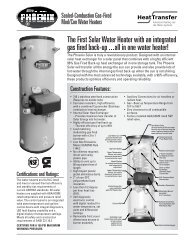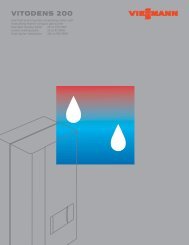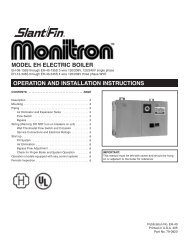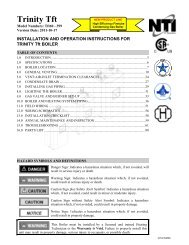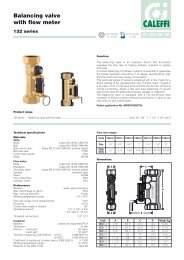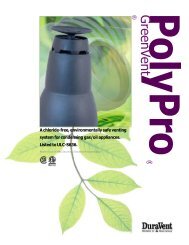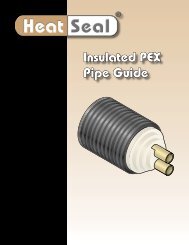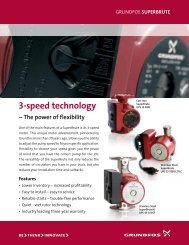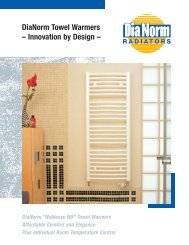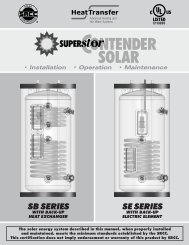Apricus Solar Water Heating System Installation and Operation ...
Apricus Solar Water Heating System Installation and Operation ...
Apricus Solar Water Heating System Installation and Operation ...
Create successful ePaper yourself
Turn your PDF publications into a flip-book with our unique Google optimized e-Paper software.
<strong>Apricus</strong> <strong>Solar</strong> Collector <strong>Installation</strong> & <strong>Operation</strong> Manual - USAThe following methods can be employed to stop thermo-siphoning:i) Normally, a check valve can be installed on the Supply (feed) Line after the pump is enough to stopthermo-siphoning. Some pumps have integral check valves, which provides the same benefit.ii) If thermo-siphoning occurs even with a check valve installed, a heat trap should be formed in thereturn line (line back from collector) close to the tank. The heat trap should be a U-shaped section ofpipe, extending downward 8-10” <strong>and</strong> then back up. Since heat rises, this downward section of pipe willtrap hot water <strong>and</strong> prevent migration of heat up the piping. This section of pipe in particular should bewell-insulated.3.19. Pressure <strong>and</strong> Temperature Control <strong>and</strong> Reliefa) Direct Flow Max Incoming Pressure: For direct flow systems, the normal operating pressure should beno greater than 72.5 psi (500 kPa), if necessary a pressure limiting (pressure reduction) valve should beinstalled on the main cold feed line.b) Closed Loop Max Incoming Pressure: For closed loop systems, the solar loop must operate at nogreater than 50 psi (350 kPa) <strong>and</strong> have an expansion tank installed to accept fluid expansion. If a singlewall heat exchanger is used, the solar loop operating pressure must be below the water main pressure. Thesolar controller should have a “max tank temp” function to protect the tank from being overheated. All<strong>Apricus</strong> controllers provide such this function as st<strong>and</strong>ard. Refer to section 6 for more information.c) Maximum Allowable Pressure: The maximum allowable operating pressure for the solar collector in anysystem configuration (domestic or commercial) is 116 psi (800 kPa) with pressure relief valve dischargerating at no more than 123 psi (850 kPa) or lower as specified by local codes <strong>and</strong> regulations. Also, checkthe maximum pressure ratings for all components of the system <strong>and</strong> only use products that can h<strong>and</strong>le theoperational temperatures <strong>and</strong> pressures of the system design.d) Stagnation: For direct flow systems <strong>and</strong> closed loop systems with suitable heat transfer fluid, it isacceptable for the system design to allow the solar collector to stagnate (i.e. stop the pump) to preventoverheating of the storage tank above ~177°F (~80°C). An expansion tank must be properly sized <strong>and</strong>installed to accept the increase in fluid volume due to thermal expansion <strong>and</strong> potential steam formation, inorder to minimize or prevent release of fluid from the pressure relief valve.e) Heat Transfer Fluid: In a closed loop system, it is important to use a heat transfer fluid that is rated to atleast 320°F (160°C) to minimize fluid degradation during periods of stagnation (see above). Depending onthe pressure of the closed loop the fluid may vaporize (boil) during stagnation causing some degradation ofthe the fluid. If stagnation happens on a regular basis due to excessive heat production (heat supply >dem<strong>and</strong>) or power outages, an inspection of the fluid should be completed. Contact the manufacturer formore information on how to check the fluid. Refer to Section 3.31 <strong>and</strong> Appendices 11-18 for heat transferfluid information.! <strong>System</strong> pressures that exceed those requirements outlined above will void the warranty.WARNINGFailure to safely control system pressure levels could result in the dangerous rupture orexplosion of system components. This may cause serious scalding injury <strong>and</strong> damage.3.20. <strong>Water</strong> Quality & Inspectiona) In direct flow systems, the water flowing through the manifold header must qualify as potable water <strong>and</strong>meet the following requirements:Total dissolved solidsChlorideMagnesium< 600 p.p.m.< 250 p.p.m.< 10 p.p.m.Total hardnessFree ChlorineSodium< 200 p.p.m.< 5 p.p.m< 150 p.p.mpH 6.5 - 8.5 Electrical conductivity < 850 μS/cmb) In areas with “hard” water (>200ppm), lime scale may form inside the header pipe (direct flow), or insideCopyright 2011 – <strong>Apricus</strong> Inc Doc: A7-05.4.1.4-PB-1.9 Page 33 of 126



